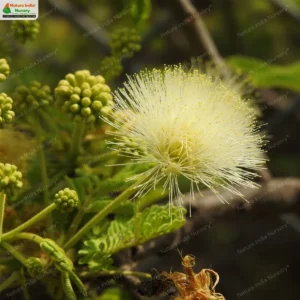Senna siamea, commonly known as the Kassod Tree or Siamese Senna, is a medium-sized evergreen tree that can grow up to 18 meters tall. It has a dense, rounded crown that becomes spreading and irregular at maturity, with alternate, pinnately compound leaves featuring 6-12 pairs of oblong leaflets. The flowers are bright yellow, appearing in large, terminal panicles, while the fruit is a long, flat pod, dark brown when mature, containing numerous seeds. Native to South and Southeast Asia, including Thailand, Myanmar, Malaysia, India, Sri Lanka, and Bangladesh, the tree has been widely cultivated and naturalized in many tropical and subtropical regions around the world.
The Kassod Tree’s ecological significance extends beyond its physical characteristics, as it provides a valuable food source for various wildlife species, including birds and small mammals. Its bright yellow flowers attract bees and other pollinators, contributing to its success in its native habitats.
Habitat
Senna siamea is native to South and Southeast Asia, including Thailand, Myanmar, Malaysia, India, Sri Lanka, and Bangladesh, and has been widely cultivated and naturalized in many tropical and subtropical regions around the world.
Planting and Care
-
Propagation: Through seeds. Seeds require pre-treatment, such as soaking in hot water, to enhance germination.
-
Soil Preference: Prefers well-drained soils. Can tolerate a range of soil types, including sandy, loamy, and clay soils.
-
Sunlight and Water: Thrives in full sun. Requires moderate watering, especially during dry periods.
Additional Information
-
Economical Values: Leaves, pods, and seeds are used in traditional medicine to treat various ailments. Contains compounds with potential medicinal properties.
-
Culinary Uses: Young leaves and pods are edible after proper preparation.
-
Wildlife Significance: Attracts pollinators like bees and other pollinators. The pods and seeds provide food for various birds and small mammals.




